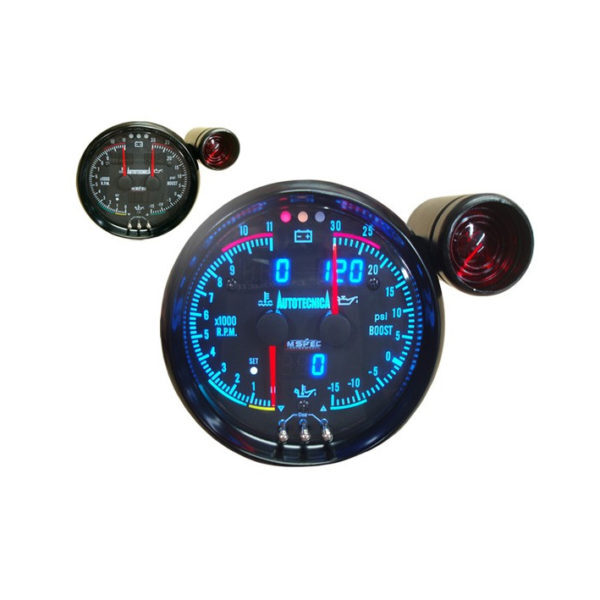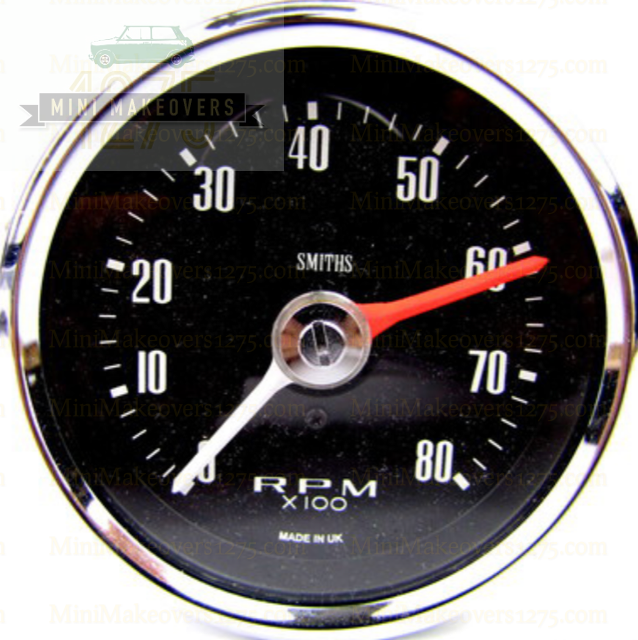Discover Just How a Tachometer Can Enhance Your Car's Efficiency
Discover Just How a Tachometer Can Enhance Your Car's Efficiency
Blog Article
The Relevance of a Tachometer in Checking Engine Rate and Efficiency in Automotive Applications
In the realm of auto design, the tachometer stands as an essential instrument in the driver's collection, offering a direct window right into the internal workings of a vehicle's engine. Beyond its feature as a mere gauge of revolutions per minute (RPM), the tachometer offers as an essential tool for enthusiasts and professionals alike, supplying real-time understandings into engine efficiency and wellness. Recognizing the relevance of this gadget exceeds surface-level monitorings, diving right into the detailed connection in between engine rate, power result, and total driving experience. As we explore the multifaceted role of the tachometer in auto applications, a much deeper admiration for its effect on vehicle characteristics and effectiveness starts to arise.
Relevance of Monitoring Engine RPM
Checking engine RPM, or changes per min, is an essential facet of automotive maintenance and efficiency examination. Engine RPM straight associates with the rate at which the engine's crankshaft revolves, indicating just how promptly the engine is running.
Moreover, checking engine RPM is important for performance evaluation in auto racing and high-performance cars. Keeping ideal RPM levels is critical for accomplishing peak power output and acceleration. Racers often utilize tachometers to ensure they are operating within the suitable RPM array for optimum performance. In recap, keeping track of engine RPM is not only essential for discovering issues yet likewise for maximizing engine efficiency in various vehicle applications.

Advantages of Real-Time Information
In vehicle applications, real-time data plays a crucial duty in offering instant insights into the efficiency and condition of the car. By continually keeping track of different specifications such as engine rate, temperature level, gas usage, and more, real-time information supplies countless advantages that add to improved efficiency and safety when traveling.
One considerable advantage of real-time information is its capability to sharp chauffeurs and service technicians to any kind of anomalies or issues promptly. This positive approach allows fast recognition of potential troubles, enabling timely interventions to stop more damage or break downs. Furthermore, real-time data helps with performance optimization by giving instant comments on driving habits and engine efficiency. Vehicle drivers can readjust their behavior in real-time based on this information to accomplish better fuel economic situation and extend the life expectancy of their automobile.

In addition, real-time information plays a vital function in contemporary automobile diagnostics, making it possible for professionals to swiftly detect and address breakdowns. This causes lowered downtime, lower maintenance expenses, and ultimately, boosted total lorry integrity and longevity (tachometer). By utilizing the power of real-time data, vehicle stakeholders can make enlightened choices that favorably influence both the performance and durability of the automobile
Effect on Equipment Shifts
The tachometer plays a critical function in maximizing gear changes by offering real-time engine rate information to the motorist. When coming close to the redline on the tachometer, it indicates the chauffeur to upshift to prevent over-revving the engine and triggering prospective damage.
Moreover, the tachometer aids in accomplishing smoother equipment changes, especially in hand-operated transmissions. By monitoring engine rate, chauffeurs can carry out gear changes at the ideal RPM variety, reducing jerking movements and decreasing wear on the transmission parts. This precision on duty modifications not just improves driving convenience however additionally adds to fuel effectiveness.
Enhancing Gas Effectiveness
Provided the crucial duty the tachometer plays in maximizing gear changes for efficiency and engine health and wellness, it straight adds to taking full advantage of fuel effectiveness in automobile applications. By offering real-time feedback on engine this contact form rate, the tachometer aids motorists in maintaining one of the most reliable RPM range for fuel economic climate. When motorists constantly monitor the tachometer and readjust their motoring routines accordingly, they can stay clear of unneeded fuel intake brought on by over-revving or carrying the engine.
In addition, the tachometer aids vehicle drivers identify one of the most fuel-efficient equipment to be in at any kind of provided moment, preventing the straight from the source engine from functioning tougher than necessary. This is particularly essential during acceleration and cruising, where remaining in the ideal equipment can dramatically affect fuel efficiency. In addition, the tachometer can inform chauffeurs to potential mechanical problems that can be adversely impacting fuel economy, such as a slipping clutch or a clogged air filter. To conclude, the tachometer functions as an important tool in improving gas efficiency by advertising ideal driving behaviors and identifying locations for improvement in the automobile's efficiency.

Taking Full Advantage Of Engine Longevity
The tachometer's role in monitoring engine speed and performance is important in making certain the longevity of auto engines. By using the tachometer efficiently, motorists can enhance engine durability via conscious RPM management. Continually revving an engine too expensive can lead to extreme damage on vital elements, such as the pistons, shutoffs, and bearings. Gradually, this can result in decreased engine performance and potential malfunctions. Keeping an eye on the tachometer enables vehicle drivers to remain within the recommended RPM array for their car, avoiding unnecessary stress on the engine and expanding its lifespan.

Verdict
In conclusion, the tachometer plays an important duty in checking engine speed and efficiency in vehicle applications. By providing real-time information on RPM, it enables reliable equipment shifts, great post to read improved fuel efficiency, and maximized engine durability. This device is necessary for keeping optimum engine performance and making sure the total functionality of an automobile.
Report this page